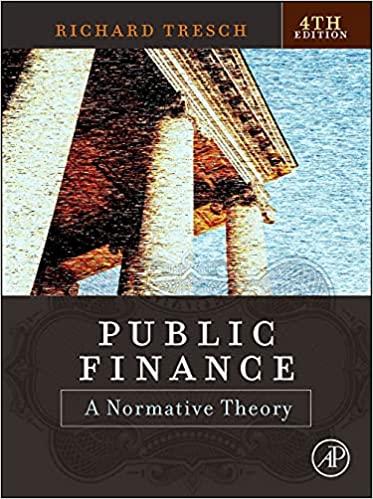Question
What does it mean to have a benefit-cost ratio greater than 1 (one)? A. It means that the policy is too costly in comparison to
What does it mean to have a benefit-cost ratio greater than 1 (one)? A. It means that the policy is too costly in comparison to the benefits B. It means that present value of benefits is greater than present value of costs C. It means that present value of costs is greater than present value of benefits D. It means that the policy is inefficient
You have to recommend one alternative from two or more alternatives. If your recommendation has to be based on the benefit-cost ratio, you would select the alternative with: A. the lowest benefit-cost ratio B. the benefit-cost ratio that is closer to 0 (zero) C. the highest benefit-cost ratio D. the ratio that has equal benefits and costs
What does it mean to have a net present value greater than 0 (zero)? A. It means that present value of benefits is greater than present value of costs B. It means that the policy is inefficient C. It means that present value of costs is greater than present value of benefits D. It means that the policy is too costly in comparison to the benefits
Make a recommendation based on the net present value of each alternative. A. E-government Basic B. E-government Plus
All things being equal, lower discount rates produce: A. Higher future values B. Lower future values C. Higher present values D. Lower present values
Step by Step Solution
There are 3 Steps involved in it
Step: 1

Get Instant Access to Expert-Tailored Solutions
See step-by-step solutions with expert insights and AI powered tools for academic success
Step: 2

Step: 3

Ace Your Homework with AI
Get the answers you need in no time with our AI-driven, step-by-step assistance
Get Started


